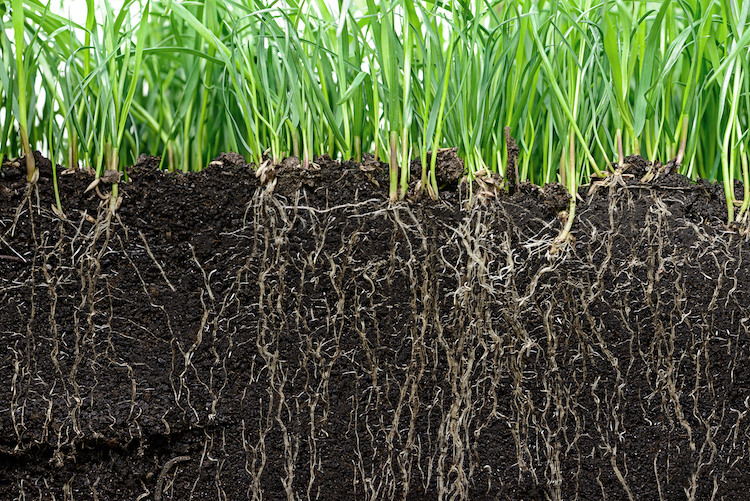
“Roots, roots, roots, and more roots. I want roots.” That was the message soil scientist Jamie Patton shared loud and clear during her presentation at the Professional Dairy Producers of Wisconsin’s Business Conference held in Wisconsin Dells, Wis.
The University of Wisconsin-Madison outreach specialist said roots are a cornerstone of soil health that play several functions. For one, roots support the plants that help build organic matter. Those roots are also leaking carbon (which helps build soil organic matter) and sugar. In fact, research has shown that between 30% to 60% of the sugar plants make is exuded out of the root system, and Patton said that sugar is feeding the biology in the soil that is helping to cycle nutrients and kill pathogens.
Those roots are the starting point for building aggregates, the groups of soil particles that cohere to each other. Patton said roots are the first ones that come in and start to mesh the sand, silt, and clay grains, bringing them together to create the aggregates. The roots also invite in the biology that helps to further build those aggregates. The aggregates have a life cycle, meaning they live and die and constantly need to be reformed, Patton said.
While roots are a solution to maintain soil health, she said they can also be an indicator that soil health isn’t where we want it to be. Patton’s favorite soil health test is eyes and a shovel. When evaluating a shovel full of soil, she said you want to see root systems everywhere, and that soil should be crumbly.
“What is the recipe for soil health? It’s pretty straightforward,” Patton said. “I want roots.”
Then she asked the audience, “If I want roots 24/7, what do I need?” Her answer was, “Cover crops. There is no secret there.”
Before running out to use a shiny new planter to get cover crops in the ground, she emphasized focusing on the basics. This includes routine soil testing to ensure nutrient levels are in check. Nutrients should be at optimal levels but not too high.
“We have to have the basics in place before we can improve soil health,” she said. “If we improve fertility, it is going to promote bacterial, fungal, and plant growth.”
Good agronomic practices also play a role, including the right planter set up, proper manure management, and staying out of fields when they are too wet to prevent compaction.
“Each practice is going to have positives associated with it, but it can also have potential negatives if you don’t manage them,” she explained. “If you stack these conservation practices, it can exponentially increase the benefits.” The journey to improved soil health is more of a marathon than a sprint, but practices that promote root growth go a long way in meeting and maintaining that ultimate goal.

The author is the senior associate editor and covers animal health, dairy housing and equipment, and nutrient management. She grew up on a dairy farm near Plymouth, Wis., and previously served as a University of Wisconsin agricultural extension agent. She received a master’s degree from North Carolina State University and a bachelor’s from the University of Wisconsin-Madison.